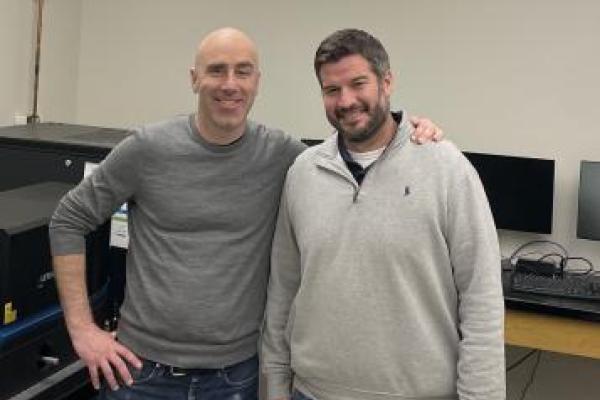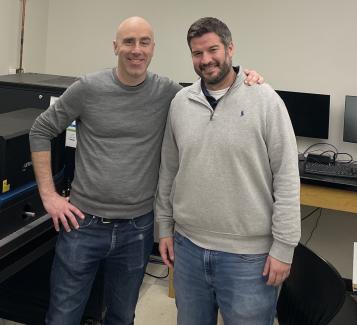$2M NSF grant furthers DNA Nanotechnology research at Ohio State

From article on the College of Engineering, Department of Mechanical and Aerospace Engineering website, linked here.
Mechanical and Aerospace Engineering Professor Carlos Castro and Physics Professor Michael Poirier received a four-year, $2 million grant from the National Science Foundation (NSF) to create novel DNA nanodevices that could have far-reaching applications in sensing, soft-robotics, energy, information storage and medicine.
The award is a part of NSF’s Designing Materials to Revolutionize and Engineer our Future (DMREF) program, which aims to foster the design, discovery and development of advanced materials to address major societal challenges.
Castro and Poirier received the grant in collaboration with Professor Gaurav Arya in the Department of Mechanical Engineering and Material Sciences at Duke University.
Castro, Poirier and Arya have been collaborating for several years to bring together expertise in DNA nanotechnology, single molecule biophysics, and theoretical and computational modeling. Their recent proposal is focused on developing materials with unique, useful, mechanical and dynamic functions based on assemblies of dynamic DNA devices.
“Our team has unique expertise in the design dynamic DNA devices,” said Castro, who is also MAE’s associate chair of research. “Here we aim to construct those devices into materials where the structure and properties of the individual devices and their interactions within larger assemblies enable behaviors that are difficult or impossible to achieve in typical engineering materials.”
This is the team’s second time receiving the NSF DMREF grant. Their first project, supported by a $1.7M grant, was focused on designing materials consisting of assemblies of dynamic devices and using dynamic behavior to sense applied forces and communicate signals between neighboring devices.
“We will take this foundation in new directions to design materials that exhibit unique structural and mechanical properties, like shape morphing or mechanical instabilities,” Castro said. “We hope to engineer these materials into systems that can detect multiple types of inputs from the environment to store and process that information.”
Their research has three focus areas:
- Assemblies with special mechanical properties or behaviors: The researchers aim to make assemblies that exhibit unusual shape changes or mechanical instabilities under applied forces.
- Signal transcending materials: Their goal is to make devices that can sense various parameters in the local environment, process information based on those parameters and create a detectable response such as a fluorescence readout or release of another molecule.
- Designing devices that can be triggered to assemble into various types of networks: Different input signals to the devices can lead to assembly of distinct networks with tailored properties, such as stiffness or porosity.
“Our approach is to construct these materials from nanoscale DNA building blocks with precisely designed structure, and tailored mechanical and dynamic properties,” Castro said. “We will establish principles for materials with new functions using molecular simulation and machine learning approaches to identify nanodevice assembly designs for on-demand material properties.”
The funding will support graduate students and post doctoral researchers for each laboratory. It will also cover research materials and supplies necessary to make the proposed devices, additional training and will enable students to present their research at conferences.
Collaborating with other laboratories with different expertise has allowed Castro and others to have impactful DMREF projects.
“Having a team that works so well together has also made the overall project exciting and enjoyable,” Castro said. “We are thrilled to be able to continue making a strong impact on developing new DNA-based materials.”
Read the original article here.

